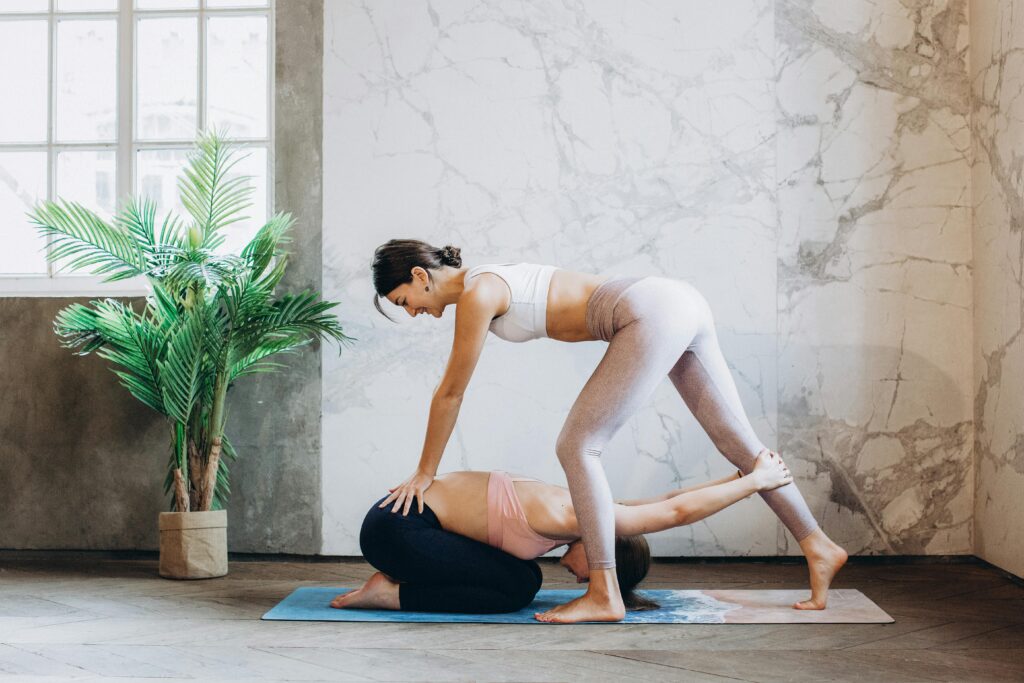Deep Stretch Yoga for Flexibility and Relaxation
In today’s fast-paced world, finding time to unwind and stretch is essential for maintaining both physical and mental health. Deep stretch yoga is an excellent practice for enhancing flexibility and promoting relaxation. Whether you’re a seasoned yogi or a beginner, integrating yoga into your routine can offer numerous benefits. In this blog, we’ll explore the importance of deep stretch yoga, key poses to try, and tips for getting the most out of your practice.
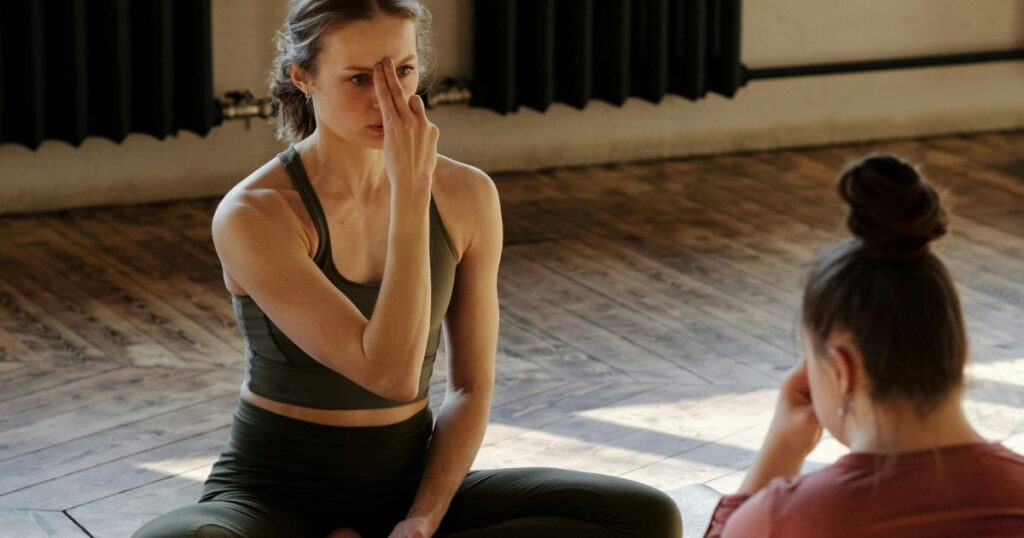
The Benefits of Deep Stretch Yoga
- Improved Flexibility: Deep stretching targets the deeper muscles and connective tissues, helping to increase your range of motion over time. This is particularly beneficial for those who sit for long periods or engage in repetitive activities.
- Stress Relief: Stretching activates the parasympathetic nervous system, which helps to reduce stress and promote a sense of calm. The slow, deliberate movements and focused breathing work together to alleviate tension and anxiety.
- Enhanced Circulation: By stretching and elongating the muscles, yoga improves blood flow throughout the body. Better circulation can lead to increased energy levels and improved overall health.
- Better Posture: Many deep stretch poses focus on opening up the chest and shoulders, counteracting the effects of poor posture. Regular practice can lead to a more aligned spine and reduced back pain.
- Mindfulness and Relaxation: The meditative nature of deep stretch yoga encourages mindfulness, helping you stay present and focused. This can enhance your mental clarity and emotional well-being.
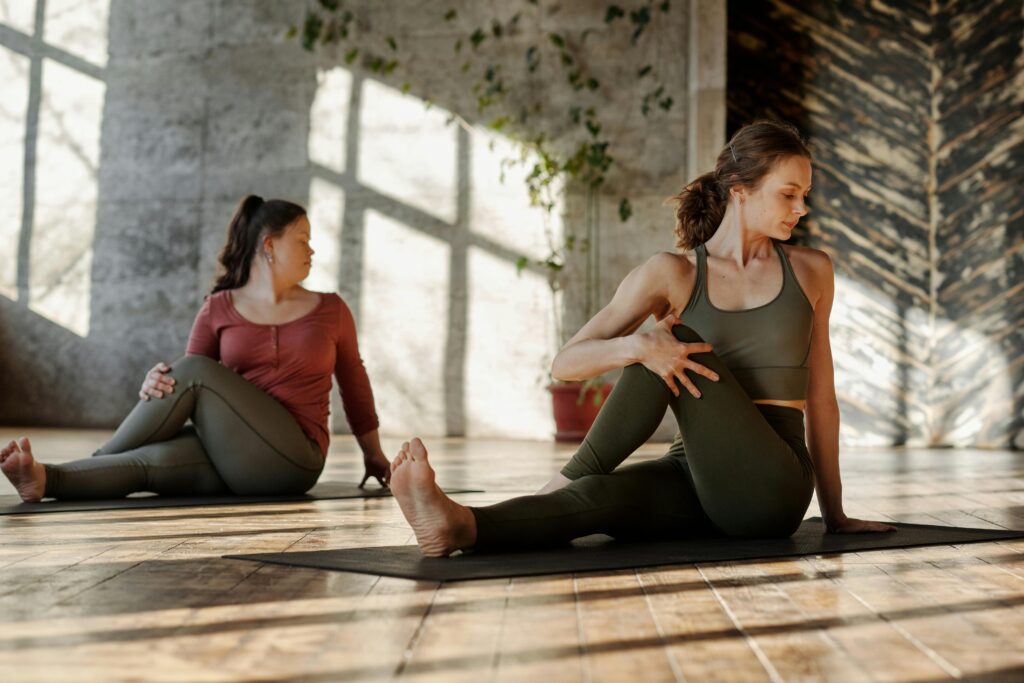
Key Deep Stretch Yoga Poses
Here are some essential poses to include in your deep stretch yoga routine:
Seated Forward Bend (Paschimottanasana):
- Sit with your legs extended straight in front of you.
- Inhale, lengthen your spine, and exhale as you fold forward, reaching for your feet or shins.
- Hold for 1-3 minutes, breathing deeply.
Physical Benefits:
- Stretches the Spine and Hamstrings:
- Lengthens and stretches the spine, shoulders, and hamstrings, making it a key pose in deep stretch yoga.
- Helps to improve flexibility in the hip joints.
- Stimulates the Internal Organs:
- Massages the internal organs, improving digestion and relieving constipation.
- Enhances the function of the kidneys, liver, and pancreas.

Reclining Bound Angle Pose (Supta Baddha Konasana):
- Lie on your back and bring the soles of your feet together, letting your knees fall open.
- Place your arms at your sides, palms facing up.
- Stay in this pose for 3-5 minutes, focusing on your breath.
Physical Benefits:
- Opens the Hips:
- Stretches and opens the hips, groins, and inner thighs, which is a common focus in deep stretch yoga.
- Increases flexibility in the hip joints, making it a valuable pose in deep stretch yoga.
- Relieves Tension:
- Eases tension in the lower back, making it a restorative pose in deep stretch yoga.
- Helps to alleviate sciatica pain by stretching the piriformis muscle.

Pigeon Pose (Eka Pada Rajakapotasana):
- From a tabletop position, bring your right knee forward and place it behind your right wrist.
- Extend your left leg straight back, keeping your hips squared.
- Lower your torso over your right leg and rest on your forearms or forehead.
- Hold for 2-4 minutes on each side.
Physical Benefits:
- Improves Posture:
- Strengthens and lengthens the spine, promoting better posture and alignment.
- Enhances the flexibility of the back and shoulders, supporting overall spinal health.
- Stimulates Internal Organs:
- Massages the abdominal organs, aiding in digestion and detoxification.
- Improves circulation to the reproductive and digestive organs, aligning with the holistic benefits of deep stretch yoga.
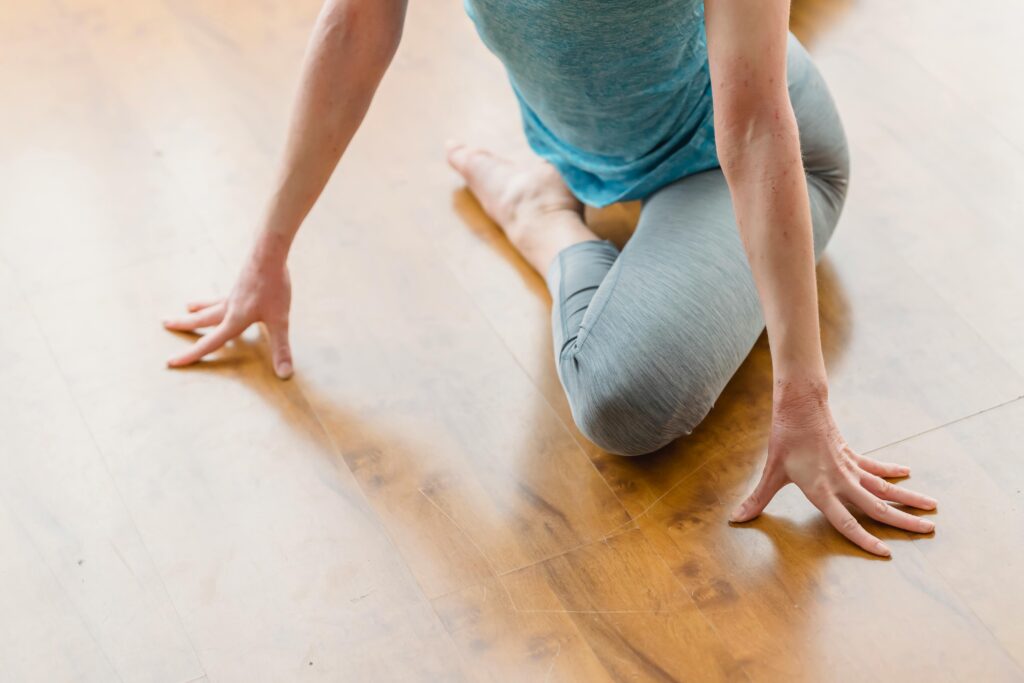
Child’s Pose (Balasana):
- Kneel on the floor, touch your big toes together, and sit back on your heels.
- Extend your arms forward and lower your torso, resting your forehead on the mat.
- Breathe deeply and hold for 1-3 minutes.
Physical Benefits:
- Stretches the Back:
- Gently stretches the spine, lower back, and shoulders, making it an integral part of deep stretch yoga.
- Helps to alleviate back pain and tension by elongating the spine.
- Opens the Hips:
- Gently opens the hips, thighs, and ankles, enhancing flexibility in these areas.
- Provides a deep, restorative stretch.
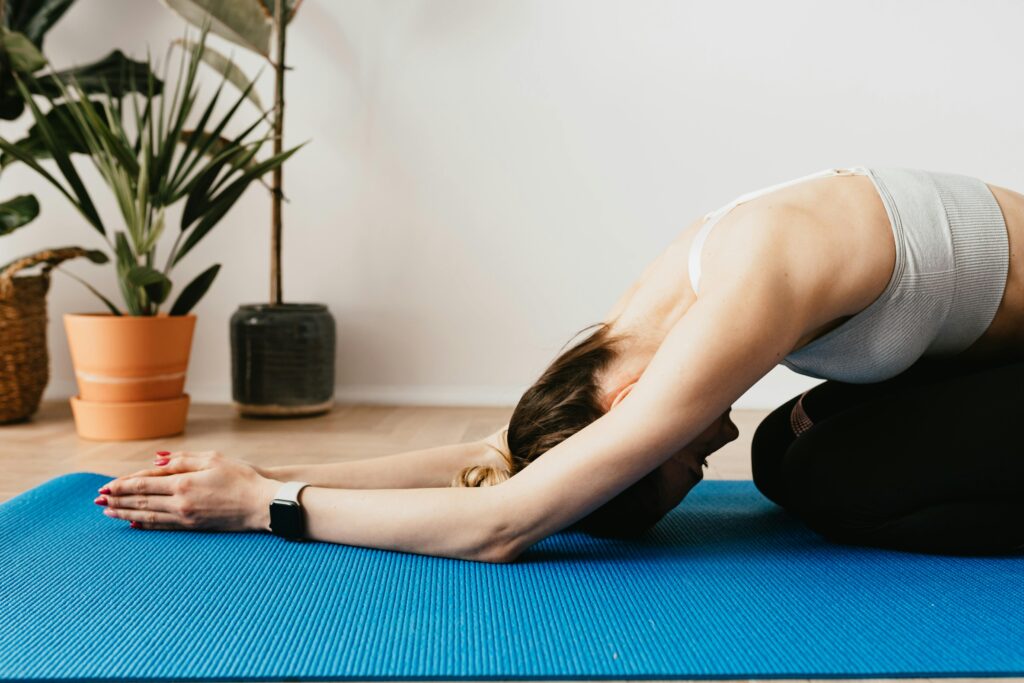
Legs Up the Wall Pose (Viparita Karani):
- Sit close to a wall and swing your legs up, lying on your back with your hips as close to the wall as possible.
- Extend your arms out to the sides or rest them on your belly.
- Stay in this pose for 5-10 minutes, focusing on your breath.
Physical Benefits:
- Improves Circulation:
- Enhances blood flow by allowing gravity to assist in the return of blood from the legs to the heart, a benefit often sought in deep stretch yoga.
- Helps to relieve tired, swollen, or cramped legs and feet.
- Reduces Swelling and Inflammation:
- Decreases swelling in the lower body by reducing fluid retention.
- Alleviates inflammation in the legs and feet, promoting overall comfort and mobility.
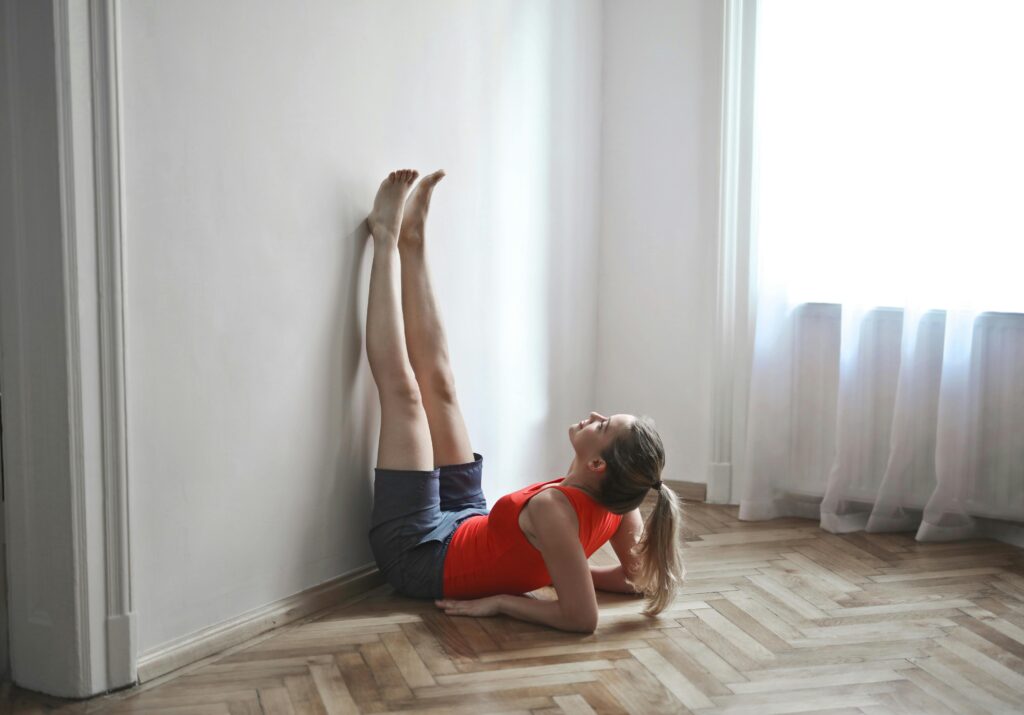
Tips for an Effective Deep Stretch Yoga Practice
- Warm Up: Always start with a gentle warm-up to prepare your muscles for deep stretching. Light movements like cat-cow stretches or gentle twists can help increase blood flow and reduce the risk of injury.
- Breathe Deeply: Your breath is a powerful tool in yoga. Inhale deeply through your nose, and exhale slowly to help release tension and deepen your stretches.
- Use Props: Don’t hesitate to use yoga blocks, straps, or bolsters to support your body in various poses. Props can help you maintain proper alignment and make poses more accessible.
- Listen to Your Body: Pay attention to how your body feels in each pose. Avoid pushing yourself too hard and respect your limits. If you feel pain, ease out of the pose.
- Stay Consistent: Like any practice, consistency is key. Aim to incorporate deep stretching into your routine at least 2-3 times a week to see the best results.
Deep stretch yoga is a wonderful way to enhance your flexibility, reduce stress, and promote relaxation. By incorporating these poses and tips into your practice, you can create a more balanced and peaceful life. Remember, yoga is a journey, so take your time, listen to your body, and enjoy the process.
To learn more about the benefits and techniques, visit Yoga Journal’s guide to deep stretch yoga.
Namaste!
